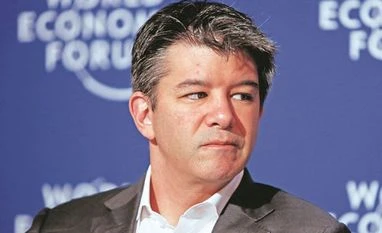Until last week, Travis Kalanick, a founder of Uber and its chief executive, ruled his company absolutely. That was the Silicon Valley way; ever since Steve Jobs was ousted from Apple in the 1980s, tech founders have demanded, and been awarded, enormous deference by investors and corporate boards. So even as successive waves of scandal have hit Uber, Mr Kalanick’s position looked safe.
Then, all of a sudden, it wasn’t. Amid many reforms, Mr Kalanick announced a leave of absence last week and late Tuesday said he was resigning as Uber CEO.
It is the swiftness of the fall that’s interesting here. In another time, Mr. Kalanick might have been able to hang on. But we live in an era dominated by the unyielding influence of social feeds. Every new Uber revelation ignited a massive campaign against the company on Twitter and Facebook. A swirl of negative branding took on a life of its own — and ultimately could not be ignored.
The story is bigger than Uber. Online campaigns against brands have become one of the most powerful forces in business, giving customers a huge megaphone with which to shape corporate ethics and practices, and imperiling some of the most towering figures of media and industry. Look at how quickly Bill O’Reilly, the former Fox News host, was dispatched from the network after The New York Times dug into his history of sexual harassment settlements. The investigation inspired an online boycott against his advertisers, who, despite Mr. O’Reilly’s soaring ratings, began to drop him faster than day-old beef tartare.
But the effects of these campaigns go beyond business. In a nation where politics have grown pitched and sclerotic, fighting brands online suddenly feels like the most effective political action many of us can take. Posting a hashtag — #deleteUber, for instance, or #grabyourwallet — and threatening to back it up by withholding dollars can bring about a much quicker, more visible change in the world than, say, calling your representative.
Brand-focused online activism can work for every political side, too: Don’t like a New York theatre company’s Trump-tinged production of Shakespeare in the Park? There’s a boycott for you, and Delta and Bank of America will give in.
Yet the mechanics of social media suggest it will be the cultural and political left, more than the right, that might win the upper hand with this tactic — especially when harnessing the power of brands to fight larger battles for racial and gender equality, as in the Uber and Fox News cases.
“Women and people of colour have gravitated to social media and were early adopters of it,” said Shannon Coulter, a marketing consultant who co-founded Grab Your Wallet, a campaign aimed at urging retailers to stop selling Trump-branded products. “Social media is actually a lever for social justice. It’s a way of levelling the playing field.”
To see why, we must first understand why brands are suddenly more vulnerable to consumer sentiment than they once were. It all comes down to one thing: Social media is the new TV.
In the era when television shaped mainstream consumer sentiment, companies enjoyed enormous power to alter their image through advertising. Then came the internet, which didn’t kill advertising, but did dilute its power. Brands now have little say over how their messages get chewed up through our social feeds.
Yes, they can run ads on Facebook, Twitter, Snapchat and everyplace else. But social media elevates consumers over corporate marketing; suddenly what matters isn’t what an ad says about a company, but what your friends think about that company.
It’s no coincidence that the only ads that get talked about these days are those that ignite some kind of social-media outrage — Pepsi’s strange Kendall Jenner commercial, for example, or the Budweiser Super Bowl ad that some viewers took to be a pro-immigration political statement. Just about every cultural sentiment — even what to think about a piece of corporate messaging — comes to you filtered through a social feed.
It’s this loss of power that explains why brands have become so jumpy and reactive. Take the production of “Julius Caesar” that opened last week in Central Park as part of Shakespeare in the Park. In the play, a Caesar who is styled to look like Mr. Trump is graphically assassinated on stage, which many on the right took as disparaging the president.
A Shakespeare scholar might point out that a production of Julius Caesar that features the assassination of a Trump-like king is not likely to be an endorsement of presidential assassination — after all, one point of Shakespeare’s play is to warn against political violence. The scholar might also point out that featuring present-day personalities in old plays is an age-old practice; in 2012, a New York company staged a Julius Caesar with an Obama-like king, Delta sponsored it, and nobody got really bent out of shape about it.
© 2017 The New York Times News Service
Unlock 30+ premium stories daily hand-picked by our editors, across devices on browser and app.
Pick your 5 favourite companies, get a daily email with all news updates on them.
Full access to our intuitive epaper - clip, save, share articles from any device; newspaper archives from 2006.
Preferential invites to Business Standard events.
Curated newsletters on markets, personal finance, policy & politics, start-ups, technology, and more.
)